Morro Bay group says offshore wind development surveys kill marine life. Is that true?
A local advocacy group claims that the companies set to install wind turbines in the Pacific Ocean off San Luis Obispo County’s coast will harm or kill marine life with site surveys planned for this spring and summer.
But the allegations, raised by local nonprofit Responsible Energy Adaptation for California’s Transition (REACT) Alliance, are mostly false and based on inaccurate information, according to a Tribune investigation that is part of our new Reality Check initiative.
The site surveys will be conducted by the three companies who won leases to potentially develop floating wind turbines in the 376-square-mile Morro Bay wind energy area located about 20 miles offshore of Cambria and San Simeon. They are Equinor, Invenergy and Golden State Wind.
The surveys use sound to learn about the marine environment, such as where shipwrecks are located, whether the seafloor is sandy or rocky and what the exact depths of the ocean are. Knowing these factors will help the offshore wind companies know where it’s feasible to construct floating wind turbines and lay subsea cables carrying the electricity ashore.
Have a local question or issue that needs a Reality Check? We want to hear from you
If approved by the U.S. Bureau of Ocean Energy Management, the surveys will likely occur in the spring and summer.
REACT Alliance, led by Morro Bay kayak guide Mandy Davis, has passed out fliers, spoken at San Luis Obispo County Board of Supervisors and addressed local city council meetings to protest offshore wind energy development.
Among its many claims, REACT Alliance alleges that the site surveys by the offshore wind companies will be using sounds loud enough to injure or kill marine life.
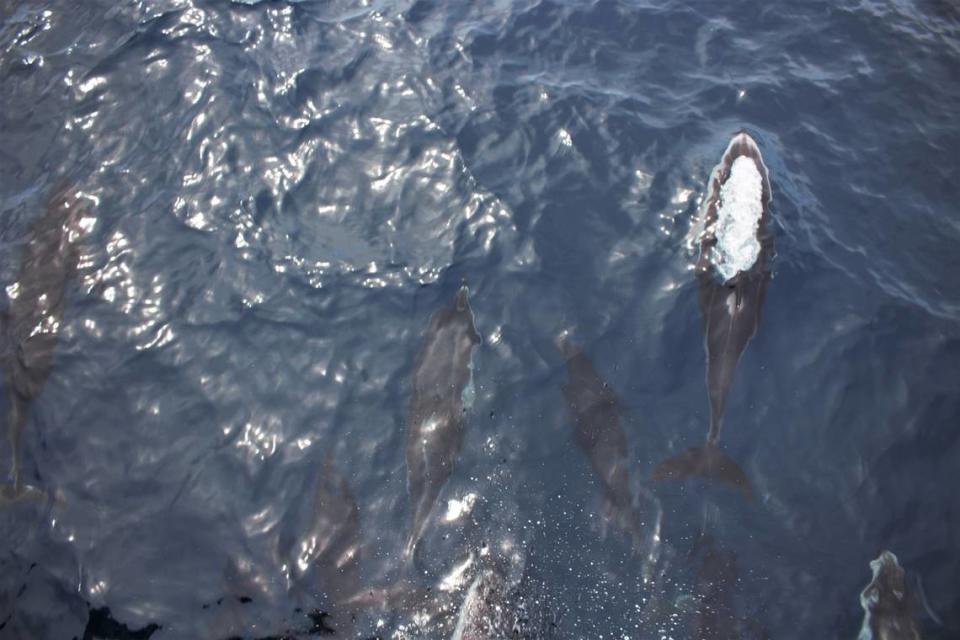
“This survey equipment is basically designed — it’s high-resolution geographical survey equipment — and it is designed to actually use sound to penetrate the bottom and to see what’s down there,” Davis said in an interview with The Tribune. “It can operate at extremely high decibels, i.e. 228 (decibels).”
Davis said the sound from the surveys could potentially hurt marine animals.
“What it does is it can displace them at best; it can injure and kill them at worst,” she said.
Davis also added she was worried that gray whale migration could be disrupted by the site surveys.
The Tribune spoke to the offshore wind companies and marine acoustic experts to better understand the surveys that are planned and whether they could be harmful to marine life.
At least one of the surveys planned by the companies is not loud enough to hurt or kill marine life, the experts told The Tribune.
However, some aspects of the surveys run the risk of displacing some marine mammals — such as potentially causing sperm whales and beaked whales to avoid diving in the survey areas to feed on fish — but not to the extent of displacing the entire gray whale migration path, they said.
“None of these (survey methods) are things that are going to cause physical harm to fish or other marine life,” said Brandon Southall, president and senior scientist for Southall Environmental Associates based out of Santa Cruz. “However, these disturbances, even if they’re relatively short term, can be meaningful to these species.”
Southall is a leading expert globally on noise impacts to marine life. He told The Tribune that the survey methods planned are standard methods used all over the world.
Offshore wind companies say survey technology is safe, tested
Equinor sent The Tribune the technology it plans to use to survey the ocean, which The Tribune then sent to marine acoustics experts for evaluation.
Golden State Wind and Invenergy didn’t send their specific technology to The Tribune but confirmed they, like Equinor, will adhere to all applicable environmental laws and work to ensure the survey technology will not harm marine life.
“All of our surveys comply with state and federal regulations, and we’re going to have to do additional reviews and stakeholder meetings prior to commencing,” said Tyler Studds, CEO of Golden State Wind. “There’s no scientific basis for what (REACT Alliance) is saying about the surveys. The technology we’re using is well tested and widely accepted as safe to use.”
Erin Lieberman, executive vice president of environmental compliance and strategy at Invenergy, said the company plans to conduct “standard geophysical and other surveys to map seafloor and sub-surface conditions and inform the responsible project siting, design, construction and operation of the project.”
“These surveys are carefully designed to minimize potential disturbance to marine mammals and other wildlife,” Lieberman wrote in an emailed statement to The Tribune.
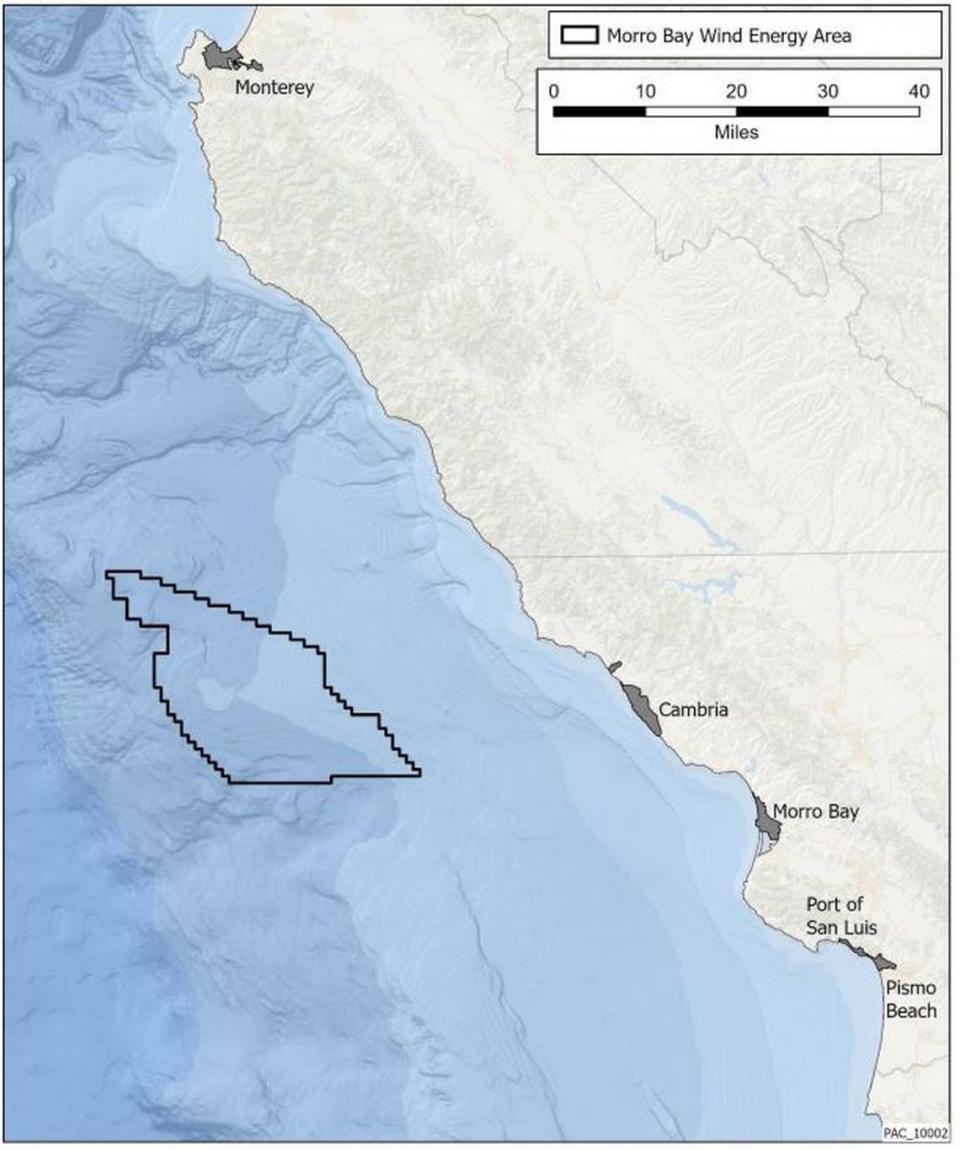
Offshore wind company explains surveys to be used for Morro Bay
Equinor will use three survey methods: a multi-beam echo sounder, side scan sonar and sub-bottom profiler.
The multi-beam echo sounder will be towed behind a boat on the surface of the ocean and is used to measure water depth. It will send out blasts of sound at between 200 to 400 kilohertz with a source level of 217 decibels underwater.
The side scan sonar will also be towed behind a boat at the surface of the ocean, but to conduct bathymetric mapping and detect features of the seafloor such as shipwrecks or rocky outcroppings. The technology will send blasts of sound at 230 to 410 kilohertz with a source level of 200 decibels to 201 decibels.
The sub-bottom profiler will be mounted on an autonomous underwater vehicle remotely operated at about about 10 meters above the seafloor. Used to gather detailed information about the seabed — such as whether it’s too soft to anchor a chain attached to a floating wind turbine — the sub-bottom profiler will send blasts of sound at frequencies between 2 to 16 kilohertz with a source level of 171 decibels.
Experts say survey methods will not kill marine life
After reviewing the survey technology specifics sent to The Tribune by Equinor, Southall said, “for these particular sound types, behavior impacts would be minimal.”
John Hildebrand, a professor and researcher focused on marine acoustics at the UC San Diego Scripps Institution of Oceanography, came to a similar conclusion as Southall, he said in a separate interview with The Tribune.
Regarding the first two survey methods, Hildebrand said “those decibels are high but because the frequencies are so high, nothing can hear those — and there’s no good evidence that those two (survey methods) have any physical impact.”
Southall came to a similar conclusion and noted that the sound of the boat’s engine could likely be the most disruptive thing to marine life during those surveys.
“I’m 99% sure those wouldn’t be able to be detected,” Southall said. “The boat itself is going to be detectable, though.”
Both Hildebrand and Southall said the sub-bottom profiler is certainly within the hearing range of most marine life because the frequencies are so low. The sounds from the sub-bottom profiler won’t physically hurt any of the ocean’s creatures but could cause temporary behavior changes, they said.
Such sounds can be detectable to animals and cause them to stop foraging or diving for food, they said. Of specific concern to Southall was the sperm whales and beaked whales, which dive to great depths for food at the sea floor.
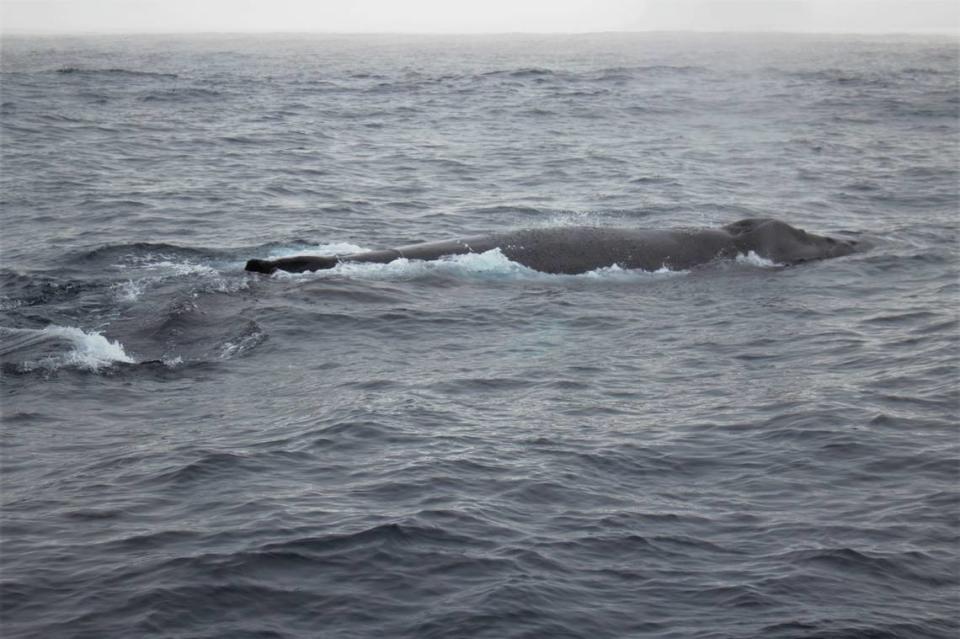
Southall noted that it’s difficult to tell how long term the impacts from the sub-bottom profiler could be — for many whales with good fat reserves, it’s unlikely to be hugely detrimental to their health, he said.
Should other species with lower fat reserves, such as porpoises, hear the sub-bottom profiler and avoid feeding near it, that could be more impactful, he said.
Both Southall and Hildebrand agreed that animals would have to be near the technology, within around 100 meters, to be impacted.
Aside from the low-frequency sound blasts coming from the sub-bottom profiler to survey the ocean floor, Southall said he was concerned about the regular operational sounds from the autonomous underwater vehicles.
Those sounds can be detectable by marine animals, he said, and could cause similar behavioral changes as the boat engine.
Survey methods approved by state, federal government agencies
However, BOEM and the California Coastal Commission require the offshore wind companies to avoid operating the survey equipment when near marine species such as whales, fish and sea turtles.
For example, each survey vessel is required by the U.S. Bureau of Ocean Energy Management to have trained observers on board looking for protected marine species.
If one is spotted, they must stop all survey operations.
Equinor will also be using underwater infrared cameras developed by Toyon Research Corp. based in Goleta to better detect when animals are nearby, said Jennifer Dupont, the company’s head of technical environmental affairs.
In 2022, the Coastal Commission analyzed BOEM’s environmental assessment of the anticipated site survey methods to be used by the offshore wind companies.
The state agency found that mitigation measures such as watching for protected marine species, coordination between offshore wind companies, communication with fishing entities and maintenance of slow ship speeds will “appropriately minimize risks to marine life.”
Survey methods to be used by offshore wind companies are not new
Dupont said the misinformation about the survey technology spread by REACT Alliance was concerning.
“It’s a very strategic effort against offshore wind ... where, in my opinion, it’s really weaponizing the environment against the industry,” she said. “When I see what what REACT is doing, and how this is coming about, it’s cherry-picking information without proving the full picture. You can’t just say 228 decibels without saying what kind of sound that is.”
“These types of equipment are not new,” she continued. “The reason you have great bathymetric maps, the reason we can find fish, the reason we know that sea level rise is happening is due to this equipment — we are just using it to make sure that we are building responsibly and doing mapping on a very localized scale to make sure we can site our infrastructure.”
One example of a similar survey done on the Central Coast was conducted by CSU Monterey Bay, UC Santa Cruz, BOEM and the California Ocean Protection Council, which partnered on a 2023 study using multi-beam echo sounders or bathymetric side scan sonar data to map the seafloor along San Luis Obispo County’s coast.
Similarly in 2018 and 2019, the U.S. Geological Survey and Monterey Bay Aquarium Research Institute partnered on a survey along the Central Coast using high-frequency sound emitters and by collecting rock samples to better understand the geology of the area’s seafloor.
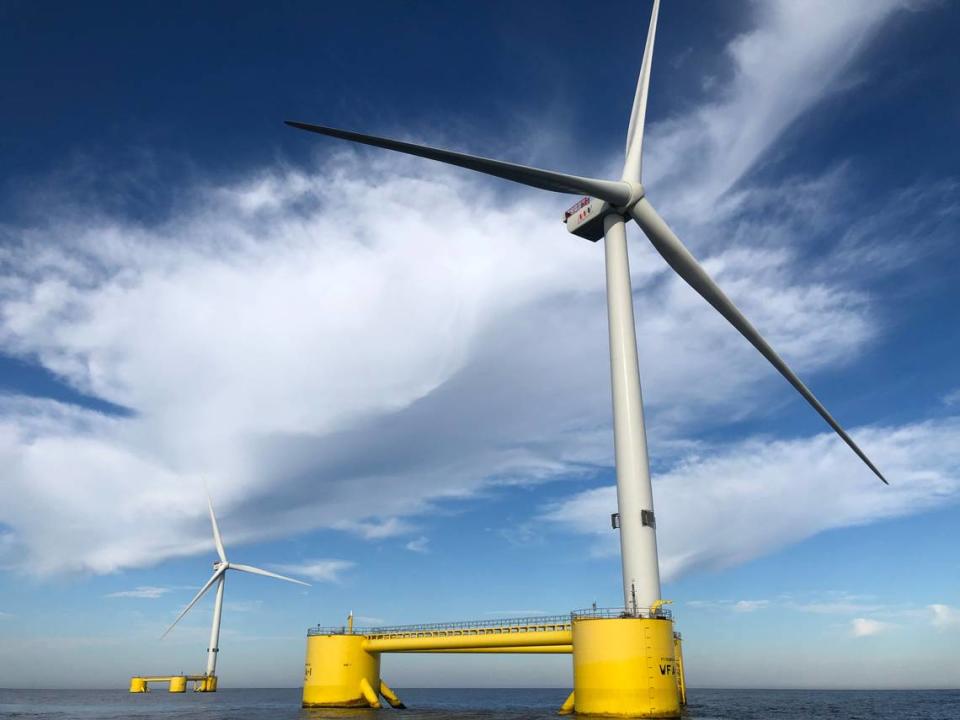
REACT Alliance to continue to oppose offshore wind development
Davis, REACT Alliance’s founder and president, told The Tribune she’s hoping “to grow a movement because offshore wind is inappropriate and it is very damaging for the oceans.”
The group is currently grassroots and funded by community donations, she said.
On the East Coast, groups labeled as “local” and “grassroots” were found to be funded by major fossil fuel and dark money donors that regularly campaign against climate policy, according to a 2023 analysis by the Brown University Climate and Development lab.
Those local groups, such as the Responsible Offshore Development Alliance, American Coalition for Ocean Protection and Save Right Whales, were partially funded by climate-change denying and right-wing think tanks such as the Texas Public Policy Foundation, Caesar Rodney Institute, Heartland Institute and Texas Public Policy Foundation, the Brown University analysis found.
When asked by The Tribune whether the group would accept donations from oil and gas companies or climate-change denying entities — Davis said she’d have to discuss it with REACT Alliance’s board.
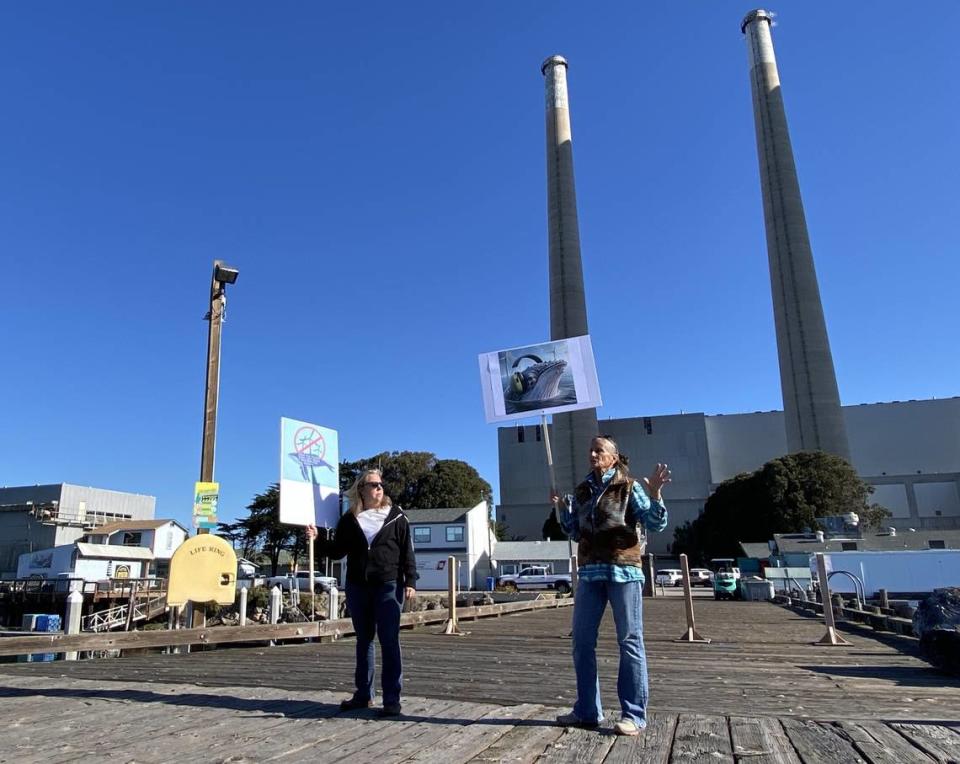
“I think if it came down to where we have a lawsuit, I don’t know,” said Nicole Dorfman, REACT Alliance’s treasurer.
Davis noted that REACT Alliance won’t stop at just the site surveys — they plan to protest offshore wind development throughout the entire process.
“We do have a voice, and it may be daunting, but there are local, state and federal laws that we can look to,” Davis said. “We absolutely feel that if we stay the course — we sort of continue to be the thorn in their side and a monkey wrench in the works on every single one of these permits, and we look to the laws to be on our side and protect what needs to be protected — it will work.”

